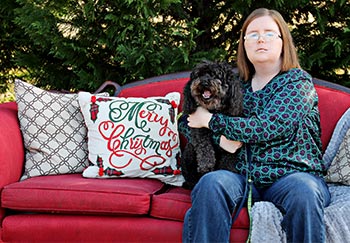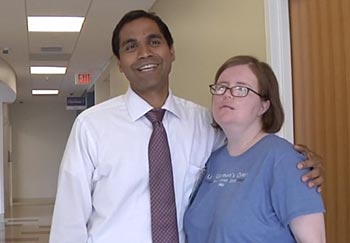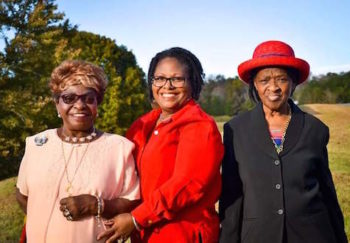
Patient Abby Loden contributed this post. Loden lives in Mississippi and does disability and NF2-related volunteer advocacy work.
During my sophomore year of high school, I was diagnosed with neurofibromatosis 2 (NF2). NF2 is characterized by bilateral vestibular schwannomas, a type of benign tumor, near the brainstem. But in many cases, as was mine, there are other benign tumors in the body.
In my case, my doctor removed what we thought was a mole. He had treated someone with neurofibromatosis before and recognized my spot as a possible symptom. So he scheduled an MRI, and during that, found several additional tumors indicative of NF2.
What Is NF2?
NF2 is a rare genetic disorder that affects 1 in 25,000 people worldwide. People with NF2 often get their diagnosis as a teen or young adult. Specifically, the disorder is caused by a mutation on chromosome 22 that causes one to not produce enough of the protein Merlin. Merlin is the body’s tumor suppressor.
The tumors and treatments – often surgery – leave one with many challenges that often include deafness or severe hearing loss, vision issues, mobility issues and a host of other problems that are specific to a tumor’s location.
Balancing a Rare Disease & College
Throughout high school, I had few NF2-related issues besides a bit of hearing loss. In fall of 2007, I began my freshman year at the University of Mississippi in Oxford as a public policy leadership major in the Lott Leadership Institute.
I worked with the school’s disability service to find the best accommodations to put me in a position for success, and I had a successful first year.
During the year, I submitted the paperwork to be part of the natural history study of NF2 at the National Institutes of Health (NIH) in Bethesda, Maryland. In fall of 2008, I made my first visit to the NIH and met Ashok Asthagiri, MD, who was leading the study. I went through a week of tests and made plans to go back during my spring break.
The fall term in 2008 was an exciting time in Oxford. The university hosted the first presidential debate, and, by finishing second in an intra-collegiate debate on international policy, I was one of the lucky ones who got to attend.
The Surgery that Changed Everything
The spring term began as a normal college semester does, and I was making summer break plans. Everything changed during spring break. I was having some issues that had been building up so gradually that I didn’t notice much. Some of the tests showed differently. Dr. A told me I needed a shunt put in the following Monday to relieve some of the pressure. He also said I would need an additional surgery in the summer to remove one of the brain tumors.
At this point, I was more concerned about missing class than I was the surgeries. I was at NIH for a week after my shunt surgery but back in class the following Monday. Over the next few weeks, I decided to withdraw from the core courses I was taking and focus on my major specific courses. My thought was that those core courses would be easier to pick up than a upper-level course only offered once a year.
That June changed everything. I went in for a surgery to remove the vestibular schwannoma on the right side of my brainstem. The surgery took almost 20 hours, and there was a bit of a complication during it.
The tumors were compressing my brainstem significantly. I knew going in that the risk was fairly large. But the only other option was to wait for an issue, one that would be very serious, possibly deadly, to happen – likely sooner rather than later. I expected to have the surgery and have plenty of time to recover before classes resumed in the fall. Instead, the pressure on my brain stem was too great, and a serious hemorrhage occurred during the surgery.
A 7-Month Brain Hemorrhage Recovery
I didn’t get back to Oxford in the fall. In fact, there were concerns that I might not get back to class for a while, if ever. Besides deafness in the right ear, facial weakness and balance issues that were expected with the tumor removal, I also suffered major weakness on the entire right side of my body.
I wanted to go home, and my parents agreed for me to try recovering at home instead of going straight to a residential rehab facility. I got home from the hospital on Wednesday and met the physical, speech and occupational therapist on Thursday for initial assessments. The next week I began intense rehab at the Regional Rehabilitation Center in Tupelo, Mississippi with one goal: to get back to Oxford.
Seven months later, I was living on my own and enrolled full-time back at Ole Miss. It took a lot of hard work to get there and patience on the part of others, but I was back and doing well. I think I saw Dr. A smile for the first time ever when he saw me on my visit that spring. When he saw me the previous fall, I was still having more than a few challenges.
Full Steam Ahead: Finishing College, Improving Campus Accessibility

Once back at Ole Miss, I was full steam ahead. Dr. A and I had a goal to get me through college with no additional surgeries. I didn’t just do the bare minimum to get by: I remained a public policy leadership major – it’s a tough program — and added a history major in only four and a half years as an enrolled student.
This wouldn’t have been possible without the support of the folks in the disability services office. They worked to ensure that I always had the best accommodations for my level of hearing loss, even when it changed during the semester. Professors not only encouraged the use of these accommodations but put in extra time and work to ensure that I could be successful. For example, to complete my foreign language component to graduate, I met five days a week with instructors one-on-one for French lessons.
My greatest accomplishment came outside of the classroom. After noticing a few accessibility issues I faced on campus, I began working with one of my public policy leadership professors to lobby for the establishment of a permanent chancellor’s standing committee focused on campus accessibility for everyone: students, faculty and staff, alumni and visitors. The committee has done some really great things and continues to improve our campus.
Graduation & More NF2 Treatment
I made it through college with no more surgeries, barely. After graduating, I had surgery, back at the NIH, four months later. This time, Dr. A and his team removed three tumors from my spinal cord at the C1 vertebrae level. The resulting nerve damage left me in severe pain, which lasted for months, and we weren’t sure how much use my right arm would be.
Again, I went back to Regional Rehab for rehab therapy and, over time, regained much of what we thought might be permanent damage.
Not long after my surgery, Dr. A moved to UVA and I made the decision to continue seeing him. Since the move, I’ve had two additional surgeries to remove tumors. The only surgery Dr. A hasn’t done for me was when I received an auditory brainstem implant. He doesn’t do them. Otherwise, I would have done it with him.
Why I Stick With Dr. A and UVA
I have had one surgery at UVA and received a Gamma Knife radiosurgery treatment last fall. When Dr. A saw that my surgery was scheduled the Wednesday before the Labor Day weekend, he canceled his plans to go out of town so that he would be around if something came up.
The hospital also has in-surgery stroke detection equipment, and that was reassuring. While it wouldn’t prevent a stroke, it might keep one from getting worse. I felt that, at UVA, not only would I have a doctor who I fully trusted but also the technology that would allow him and the surgery team to put me in the best position for a good outcome.
In addition to this, I’ve done two rounds of chemotherapy. The chemo and radiation are done with the goal of buying time with the hopes that better, less damaging, treatments become available in the future.
I work as the sports news coordinator for my local paper, The Itawamba Times, and continue to do advocacy work, both disability and NF2 related.
Researching NF2 Treatment?
Learn more about how UVA cares for patients with neurocutaneous disorders.
Some question why I travel from Mississippi to Virginia for care. It’s simple, really. Trust. Over the last ten years, I’ve developed a relationship with Dr. A that I would have a hard time building anew. We’ve developed a common goal for my future.
I have been fortunate to receive care from some really great doctors and their teams, but Dr. A’s opinion and suggestions, even when I pepper him with questions, always plays the dominant role in my decisions. Truthfully, those decisions are much easier than most might expect. And that’s because I know — before we even discuss an issue — that he considers all possible avenues of treatment and my desire to maintain a high quality of life for as long as possible before recommending a course of action.

